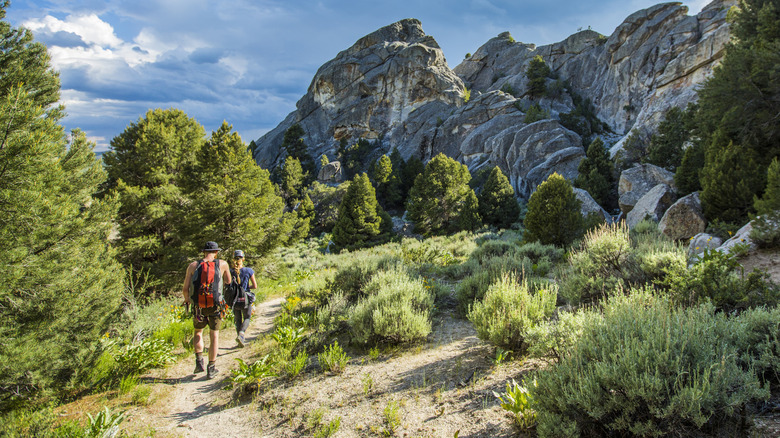Park Rangers Urge Guests To Keep This In Mind When Planning Visits To National Parks
Planning a national park trip involves much more than transportation and lodging. The over 400 places managed by the National Park Service pretty much cover every type of ecosystem and terrain found in the United States and feature many ways to take in their beautiful sights. There are usually some paved roads so that you can explore from your own vehicle, strenuous hiking routes, and plenty of levels in between.
National park rangers offer important safety advice that applies to any park activity. However, if you plan on getting high up in a mountainous region, there are more things to remember than to bring the proper equipment. Park rangers want you to take altitude into account, even if your itinerary doesn't involve the most challenging national park hikes or traversing big snowcapped mountains. As former park ranger Tom Haraden explained to Business Insider, "Many western parks are high in elevation. Some are obvious, like Rocky Mountain or Glacier, but others are not obvious, like Grand Canyon and Bryce Canyon. Elevation can really affect people who aren't used to it or have medical conditions."
Acclimate yourself to altitude by ascending gradually
As is the case with the human body's tolerance for hot weather, you can acclimate yourself to higher altitudes. While medications like ibuprofen can help, moving up the route gradually is paramount. Of course, going slowly will take more time, but Tom Haraden believes that this is a better way to explore a national park. He advises visitors not to pack too many things into their trip and instead spend more time at fewer points of interest.
Those with medical conditions like sickle cell anemia or heart disease should rethink trekking to higher elevations, but altitude sickness can happen regardless of preexisting conditions. Symptoms include fatigue, headaches, and nausea. While this usually becomes more prevalent when reaching elevations above 8,000 feet, you need to physically prepare for high-altitude trips even if you won't be surpassing that number. For example, Denver is a little over 5,000 feet above sea level, and football players competing against the Broncos at Mile High Stadium sometimes use oxygen tanks that are on the sidelines.

